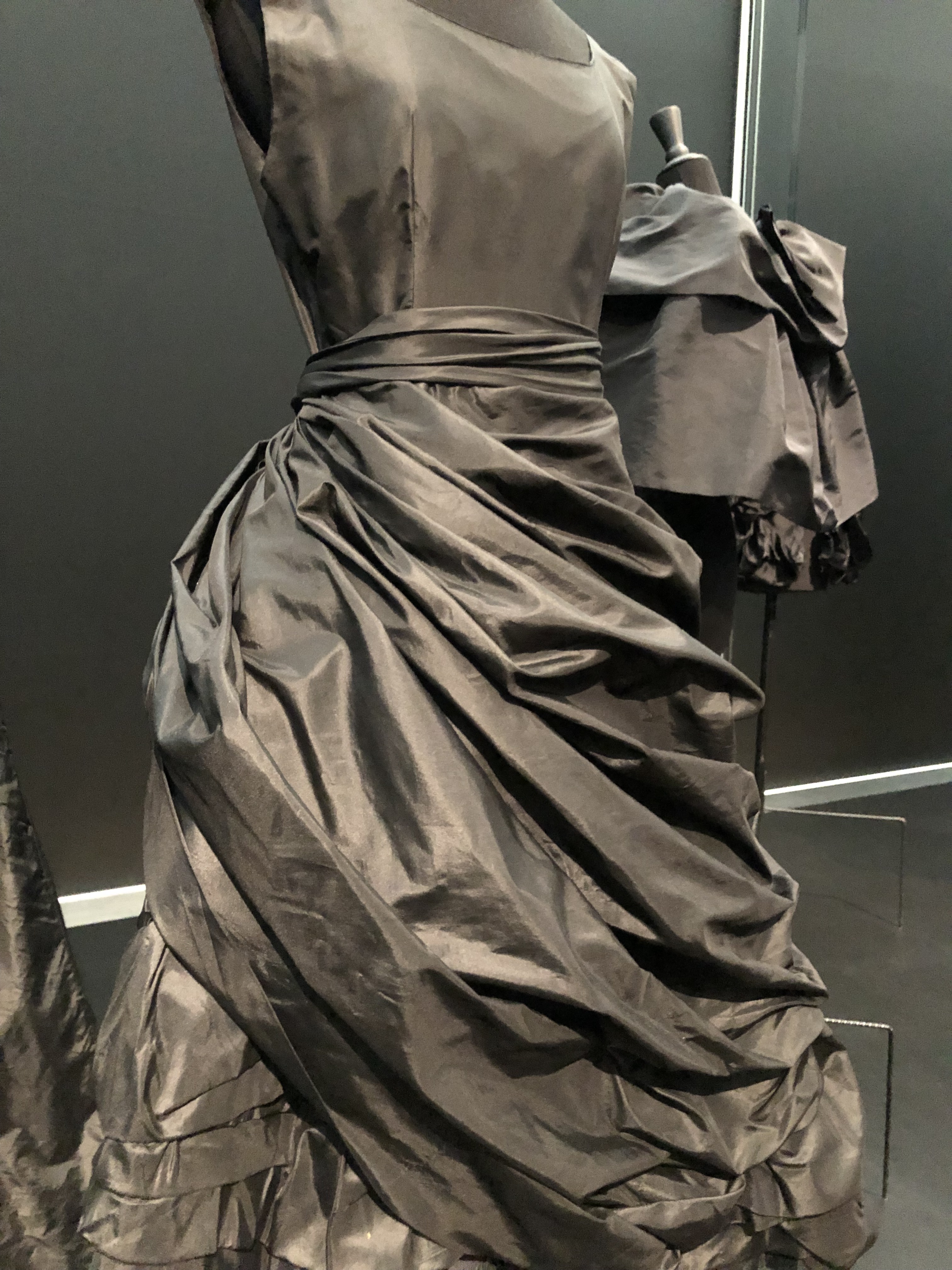I am a fan of couture ball gowns, particularly those from the mid-twentieth century prior to the 60s. I find them intriguing as sculpture, and as one who composes dance, I am fascinated by the way designers see the possibilities of constructing these dresses for both the image they create on the human body and the manner in which they move. I am particularly enamored of Charles James’ work after seeing an exhibition at the Costume Institute in the Metropolitan Art Museum in NYC a few years ago, one that was stunning for the quantity and quality of the collection, and for the interactive nature of it (viewers were able to see a gown virtually disassembled and reassembled, in a stream of seaming flight). This particular collection caught my attention, too, for the colors of the gowns – many were in muted browns, greens, golds and burnt oranges. Not your typical color palette for such formal evening wear. While the colors I mentioned don’t show up in force in this link, it is still possible to get an idea of his genius here: https://www.metmuseum.org/exhibitions/listings/2014/charles-james-beyond-fashion/images
Unfortunately I couldn’t find anything in the permanent collection on line that quite approximates the gloriousness of that exhibition. You can, however, follow the Met on Instagram – and they’ve posted a few of those gorgeous gowns recently for viewers to enjoy. #metmuseum

In fact, I got on to this site today to post photos of the Balenciaga in Black exhibition at the Kimbell Art Museum. #kimbellartmuseum For those who are living in Fort Worth/the metroplex, or visiting in the next three weeks, it is a must see!
I am fascinated with Balenciaga’s work too – for reasons I mentioned above – and more: this particular exhibition showcases many aspects of his work. I am drawn to the references he makes to traditional Spanish dress, and the accompanying exhibition of Francisco Goya’s work reinforces that connection to these particular designs. What really captured my attention was the play of “black on black” in this collection. In the spring, I am revisiting a work I made in fall, 2012: empty into the night. That work started with a challenge from the Renaissance painters: to create a dance in which it appeared the light was emanating from the dancers themselves. Of course this was in many ways more a challenge for lighting and costume designers of the work. But it did require a rather geometric choreographic construction. I am drawing parallels now because one of the ways I worked with the designers to achieve faceting, to create a dance that lived between shades and textures, was to create costumes made of several different fabrics, all variously sculpted browns. Now, through Balenciaga’s work, I am reminded of how easily and willingly simplicity can turn a corner into complexity, and still retain its underlying quiet.
To see this exhibition is to realize that Balenciaga made his way over a life time as both artist and craftsman, and continued to forefront his ability to design both inside and outside of culture at once.
In true Spanish fashion, there were many capes of varying sizes and styles in this exhibition. I was amused – traveling through the Goya exhibition – to see traditional Spanish wear both clothing subjects and fantasizing them!
Finally, this is perhaps as close as I will get to being inside of one of these dresses! Still….all in all…pure pleasure to find inspiration – and delight – in this masterful work.





You should buy a gown and take Don on a date.
LikeLike